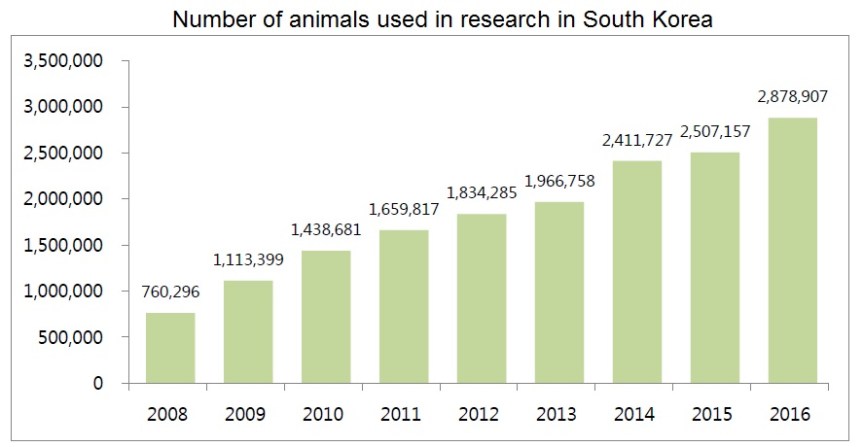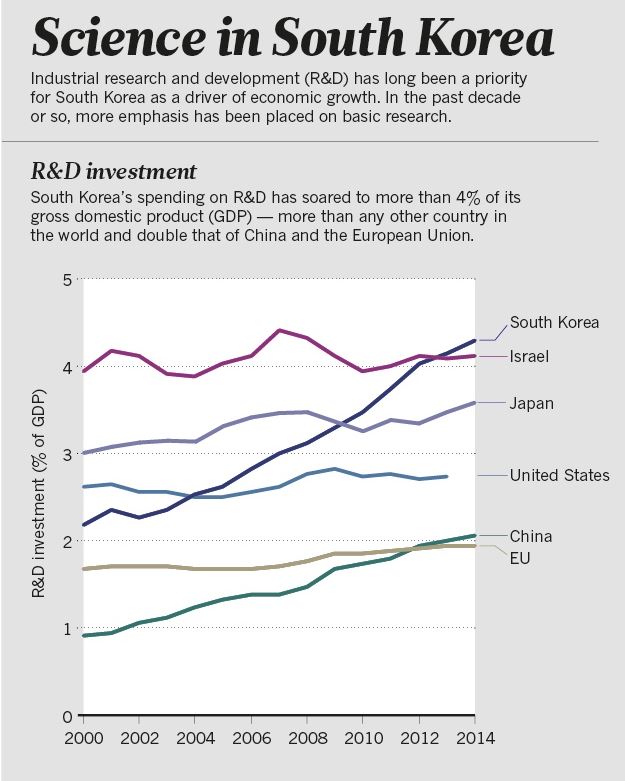In February 2017 the Animal and Plant Quarantine Agency (APQA) of South Korea released its animal research numbers for 2016. We spoke to the Animal Protection & Welfare Division and have been able to get a translated copy of these figures. The tables below were produced by the APQA, and we thank Dr Lee for providing these figures.
In 2016, South Korea used 2,878,907 animals in research, up 14.8% from the previous year.

Rodents, fish and birds accounted for over 97% of animals used in research – similar to figures found in Europe. Most of the rise in animal experiments came from an increase in rodents (+19.5%), though numbers for fish (+15.2%) and birds (+60.7%) also contributed. There were falls in several categories, including primate experiments, which fell 18.8%.
South Korea also produced severity statistics, similar to those in Europe. 2.6% of research showed no harm to the animal, 28.4% was mild, 35.5% was moderate and was 33.4% severe.We are unclear if these categorizations are based on pre-experiment licenses (what the researcher believed the severity would be) or post-experiment evaluation (what the researcher saw the severity to be).

The number of animals used in research has risen sharply over the last nine years, up 279% over the period, rising at a fairly steady rate of over 250,000 animals per year. To see why, take a look at a graph, produced by Nature, on the growth of R&D in South Korea over the same period.

The huge rise in spending on basic and applied research means that animal experiments were likely to rise (and did) over the same period. In 2013, South Korea had more researchers per thousand people in employment (12.84) than Japan (10.19), the USA (8.81) or Germany (8.54). Medical and health sciences were the largest discipline (by publications) in South Korea (see Nature article).
If you know of any animal research statistics not on our list, please contact us.

